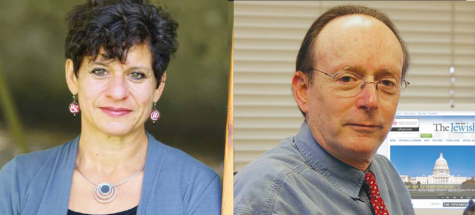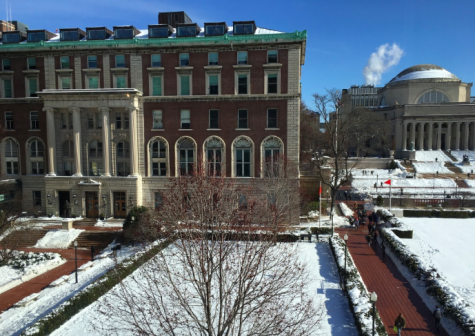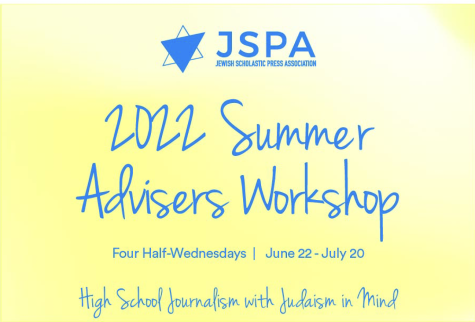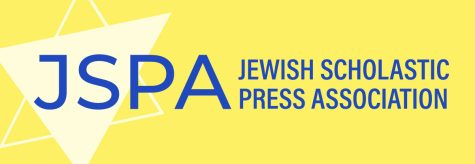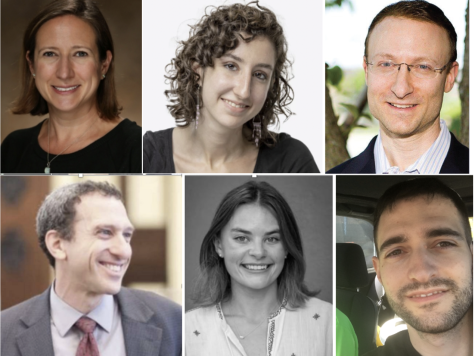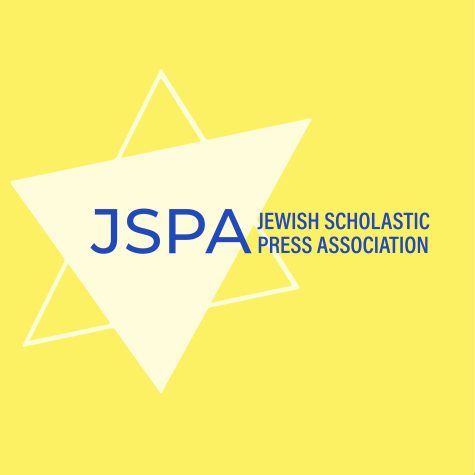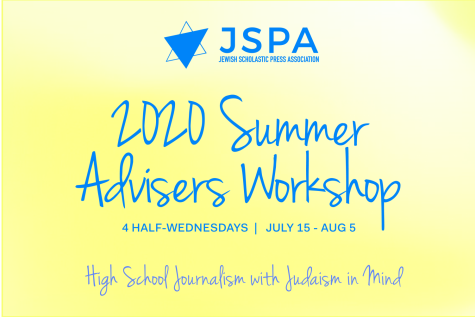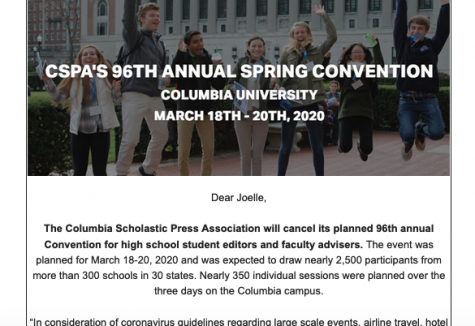2014 Conference Program and Speaker Bios
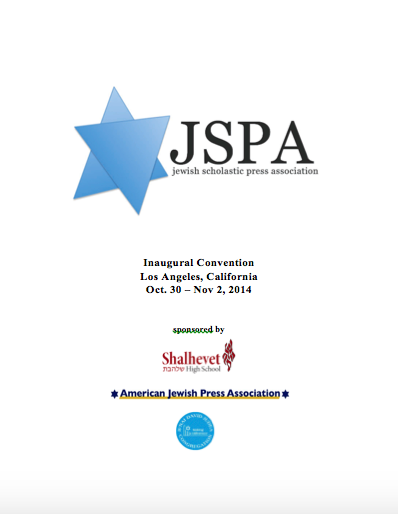
October 25, 2014
PROGRAM
Thursday, Oct. 30
8:30 a.m: Shacharit at Bnai David-Judea
9 – 10 a.m. Registration and greeting
THURS 10:00 – 10:50 A.M. Session 1 – choice of 3 workshops
Long-form narrative journalism and profile writing – Kurt Streeter, Los Angeles Times
Kurt Streeter, longtime columnist and feature and profile writer for the Los Angeles Times, is renowned for his unique ability to convey to students just how it is that he does what he does. Note that this kind of work isn’t “investigative” in the sense of traditional investigative journalism, though it does require some of the same skills.
Freedom of the press in religious high schools – Joseph Lipner, Irell & Manella LLP
A primer on privacy, libel, censorship, student press shields, Hazelwood, FOIA and FERPA, including California’s pioneering Leonard Law, which grants to both public and private high schools all the freedoms afforded the professional press except one: work that violates he religious tenets of a religious high school. How to navigate through conflicting laws and court cases — and what to do when you’re not sure what applies.
THURS 11 – 11:50 A.M. Session 2
Swap shop – Students holding similar positions at different schools will compare notes, stories, challenges, success stories, etc., along with their newspapers. Bring plenty of copies to share.
12 – 1:30 Lunch – Students on their own on Pico (location of many kosher restaurants)
THURS 1:30 – 2:20 P.M. Session 3, Choice of 2 workshops
Telling the Whole Story – Kathy Neumeyer, Harvard-Westlake School
One person’s experience can be a compelling story. And every word of it may be true. But it is never the whole story. There is always more than one side of a story and sometimes multiple sides of a story. It is the job of the journalist to look for all of the truth, to accurately and fairly convey all of the story.
Inspiring Visuals for Print Newspapers – Jen Bladen, Harvard-Westlake School
Starting with the front page and working our way through, we’ll look at what makes newspapers look great. Several professional publications now demand that their writers turn in some visual element – a photo, an infographic, an illustration or other art – with every story. Let’s look a lots of options for your newspaper and how to find or create them yourself.
THURS 2:30 – 3:30 Session 4 – choice of 2 workshops
Covering Israel and Jewish Issues in the College Press – Zev Hurwitz, UC San Diego Guardian
With Israel and anti-Zionism becoming more newsworthy on campus, college papers can help explain the issues, but student journalists covering these topics have been accused of bias and often face conflicting interests. Learn how to write the stories, how to avoid bias and know when to recuse yourself from writing a story
Photography for Print and Online Journalism – Jen Bladen, Harvard-Westlake School
What makes great photos? Looking at lots of examples of student photograph, we’ll talk about photo composition basics and how to use your most important photographer’s tool: your feet! Other topics include photo resolution for print and digital, photo ethics and copyright, as well as best practices for digital photo file management. Jen Bladen
THURS 3:30 – 4:20 P.M. Session 5 – choice of 2 workshops
Using Multimedia to Cover Your School – Kathy Neumeyer, Harvard-Westlake
A panel of juniors and seniors who work on the Harvard-Westlake Chronicle’s award-winning online edition will talk about achieving a web-first mentality, covering news and sports within hours of its breaking, devising attention-grabbing features, making short videos, and using Instagram, Twitter and Facebook to enhance news coverage.
Cutting-edge journalism in high schools – C. Bruce Watterson, Columbia Scholastic Press Association
With local newspapers on the decline, in many places scholastic journalism has been picking up the slack, offering high school journalists the chance and responsibility to make a real difference. What’s possible on a high school paper, what are other schools doing that you can do too, and what do your readers really need?
THURS 7:00 PM
CONFERENCE-WIDE ADDRESS: RABBI YOSEF KANEFSKY
Journalism and Jewish Law –
Looking through the lens of Jewish law, an exploration of journalism and the conflicting halachic imperatives of avoiding lashon harah and protecting others from harm, which journalism can often uniquely do. With assistance from Abe Rosenberg.
Friday, Oct. 31
FRI 9:30 A.M. Session 6 – choice of 2 workshops
The Torah Section: How to find news in Tanach, Halacha and morning davening. Noah Rothman, The Boiling Point
They say nothing’s older than yesterday’s news, but as old as it is, the Torah is new whenever it’s applied to modern life. From shomer negiah to kashrut to the role of women and girls, Judaism always has something to say. Learn how to bring this to life for your readers.
Interview technique – Susan Freudenheim, Jewish Journal
Ever wondered how to get your subject to talk? Learn how to frame your questions and techniques to get the most out of even a very short time for an interview.
FRI 10:30– 11:20 a.m. Session 7 – choice of 2 workshops
How to Get Away with Journalism: Copyright in the news media – Rachel Faulkner, Irell & Manella LLP
From photographs to quotations to music, journalists use a wide variety of sources in their work, and some of these sources may be protected by copyright. A good journalist needs to know how to cite, quote or show copyrighted material without infringing. We’ll learn what exactly a copyright is and what it prohibits journalists from doing, using examples from real-life copyright cases. And we’ll explore the things journalists need to consider before using someone else’s work without permission, including the famous “fair use” defense.
Design critique – C. Bruce Watterson, CSPA
Bring your newspapers – the best and the worst – and Mr. Watterson will give you individualized analaysis and suggestions for improvement..
FR 11:30 a.m. – 12:20 pm: Session 8 – choice of 2 workshops
Covering the Gaza war from one side – Rob Eshman, The Jewish Journal
How Jewish papers cover Israeli wars is really important, and goes to the heart of many issues in Jewish journalism. Using examples and case studies, Mr. Eshman will explore how the Jewish Journal handles this,noting that the paper has received its share of kudos and slapdowns for the way we’ve done it.
Feature Page Design, or How to Get Magic from a Double-Truck – C. Bruce Watterson, Columbia Scholastic Press Association
It’s part creativity, part technology and part artistry, and it makes the difference between who reads the story and who doesn’t. Here’s a step-by-step guide to approaching perhaps the most challenging part of page design.
12 – 1:30 Lunch – Students on their own on Pico (location of many kosher restaurants)
FRIDAY 1:30
Diversity in the Newsroom and in the News – Jennifer Medina, New York Times
There’s a lot of discussion about who the news is for — who reads it, who needs it, and how to determine what it is — and this is sometimes inseparable from the question of who is producing and “curating” it. A reporter’s race, class, language, religion and religiosity can all come into play, as Jennifer Medina has discovered as an observant Jew at the New York Times.
Tales from Tehrangeles, or how to cover a minority community without stepping on the land mines ~ Karmel Melamed,
When reporting on a community that is new or not well-known, it’s hard to get people to open up about their issues and stories. The Iranian-American community is an example of this challenge — private and tight-knit after suffering tragedy in Iran and still carrying fear for their lives after more than 30 years. Mr. Melamed well share how he won their confidence, how he’s developed some sensitivities, and what steps he’s taken to continue building relationships benefitting both his sources and the readers who long to understand their experience.
FRIDAY 2:30
KEYNOTE ADDRESS: DIANE WINSTON
Covering a conflict without adding to it: Stories from religious strife around the world
Diane Winston teaches religion coverage to journalism students at
the University of Southern California. For the past five years, her classes have visited global
hotspots to report on how religion fits into social, political, economic and environmental problems,
challenges and solutions.
FRIDAY EVENING – EREV SHABBAT PROGRAM
Shabbat begins at 5:51 pm Mincha and Kabbalat Shabbat at Bnai David followed by catered dinner and speaker at the synagogue.
PROFESSOR JUDEA PEARL
President of the Daniel Pearl Foundation
Saturday, Oct. 26
Shacharit and Musaf at Bnai David
Lunch at Bnai David followed by discussion of an ethical dilemma led by Joelle Keene
Afternoon: Free
Saturday night: Optional city outing – destination TBA, hopefully Israeli Film Festival
Sunday, Oct. 27
10 AM: Presentation of awards; Filling out of conference evaluations
12 noon: Conference adjourns
~~~~
JSPA SPEAKERS
Jen Bladen has been a yearbook professional since 1998: first as a high school adviser, then as a sales representative for one of the nation’s largest yearbook publishers and now teaching at Harvard-Westlake School in Los Angeles, Calif. She is also the department head for the Middle School Communications Departmentm which includes speech, debate, journalism and student government.
Rob Eshman is Publisher and Editor-in-Chief of TRIBE Media, a niche multimedia company based in Los Angeles that produces The Jewish Journal, Tribe magazine, jewishjournal.com and hollywoodjournal.com. Both The Jewish Journal and Rob have won numerous local and national awards for writing, design and community leadership. His work has also appeared in the Jerusalem Post, Los Angeles Times and Huffington Post.
A frequent commentator on Los Angeles-area radio and television, Mr. Eshman serves on the board of the Media Policy Center and is a founding board member of the Daniel Pearl Journalism Institute in Herzliya, Israel.
Rachel Faulkner is an intellectual property attorney with Irell & Manella LLP, a law firm located in Century City. She received her BA from Harvard University in 2010 and her JD from Stanford Law School in 2013. Mrs. Faulkner has litigated or advised clients on copyright matters relating to music, toys, photographs, websites, computer databases, television shows, and books. She hopes to someday get a video game case.
Susan Freudenheim has been executive editor of the Jewish Journal since 2011 and served as managing editor from 2006-2011. She oversees day-to-day management of the newspaper’s editorial staff as well as its online edition, assigning and editing news, features, arts and editorial columnists, and she also occasionally writes columns.
From 1990 until 2003 she worked as an assigning editor and writer at the Los Angeles Times, most of it as arts editor in The Times’ Calendar Section. She also has written art criticism and freelance articles for the New York Times and many arts and general interest magazines and newspapers.
Zev M. Hurwitz is a senior at UC San Diego studying Political Science and Editor-in-Chief of the campus newspaper, The Guardian. Zev has previously written for The Jewish Journal of Greater Los Angeles, New Voices and Israel Campus Beat, and has won two CCMA (California Collegiate Media Association) awards. He also serves as executive vice president of the Union of Jewish Students at UCSD.
Zev was Editor-in-Chief of The Boiling Point and www.shalhevetboilingpoint.com for the 2010-11 school year.
Jacob Kamaras is editor of JNS.org, a newswire service providing content to more than 70 Jewish-themed publications. He has worked for AOL’s hyperlocal news venture, Patch.com; The Jewish State, a weekly newspaper in New Jersey; and The Jersey Journal daily newspaper. He also was editor of the student newspaper at Brandeis University.
Rabbi Yosef Kanefsky is rabbi of Bnai David-Judea Congregation in Los Angeles. He was ordained in 1989 at Yeshiva University, from where he also received a Master’s Degree in Jewish History. Since assuming leadership of Bnai David in 1996, he has helped it emerge as a voice of creativity and innovation within Orthodoxy, and as a vital link between the Orthodox community and the larger Jewish community of Los Angeles. He also has introduced changes in synagogue ritual and leadership intended to enhance the role of women in Orthodox life, and has established social action as a central dimension of the congregation’s activity.
Rabbi Kanefsky is a frequent contributor to Morethodoxy blog, past president of the Board of Rabbis of Southern California, and a regular contributor to the Jewish Journal of Greater Los Angeles. He also is president of International Rabbinic Fellowship.
Joelle Keene, JSPA’s founding director, teaches music and journalism at Shalhevet High School in Los Angeles, where she advises the school’s nationally award-winning newspaper and website, The Boiling Point and shalhevetboilingpoint.com.
A graduate of Columbia University’s Graduate School of Journalism, Mrs. Keene worked for the Tacoma News-Tribune, Seattle Times and Los Angeles Herald-Examiner, winning national, state and local awards for education coverage and investigative reporting. She later served as Associate Editor of OLAM Magazine and her work has appeared in the Los Angeles Times, chabad.org, Reform Judaism, and Conversations: The Journal of the Institute for Jewish Ideas and Ideals, among other publications.
Rachel Lester is a sophomore at the University of Southern California. She was Managing Editor of the Shalhevet Boiling Point in 2011-2012, when it won the CSPA Gold Crown Award and was a finalist for the NSPA Pacemaker, both in the large newspaper broadsheet category. She also has won multiple national awards for newspaper and yearbook design.
Joseph M. Lipner is a partner in the Los Angeles office of Irell & Manella LLP, where he is a member of the firm’s intellectual property and litigation groups and chair of the firm’s appellate practice group. He has litigated in the superior and appellate courts of California, federal district courts, the Second, Ninth and Federal Circuit Courts of Appeal, and the United States Supreme Court. He also is the co-author, with his wife Abigail Yasgur, of the children’s book Max Said Yes: The Woodstock Story.
Karmel Melamed is an award-winning internationally published and attorney based in Los Angeles. Born in Iran at the brink of the country’s revolution, he and his family fled to escape persecution from the country’s newly established Islamic regime. As a journalist since 2000, he has given voice to the successful yet insular Iranian Jewish community in the United states, and his articles on this and other Middle East topics have appeared in the Jerusalem Post, JTA International Wire Service, The Forward, the Jewish Journal, Tablet Magazine and many websites. He also is a frequent guest on NPR and on KIRN Radio Iran 670 AM, the only Persian-language radio station in the free world.
Jennifer Medina is a national correspondent for The New York Times based in Los Angeles, covering Southern California and Nevada. Since joining the bureau in late 2010, Ms. Medina has focused on the uneven economic recovery, immigration, prisons and education. Since joining the Times a decade ago, Ms. Medina has also covered state politics in New York and Connecticut and spent several years writing about New York City public schools.
Kathleen Neumeyer has written hundreds of newspaper and magazine articles as a staff writer for United Press International, a contributing editor of Los Angeles Magazine, and as a freelancer for The Economist, the Los Angeles Times, Emmy Magazine, Ladies’ Home Journal and others. She has taught journalism at California State University Northridge, and has advised the Harvard-Westlake Chronicle for more than 20 years.
The Columbia Scholastic Press Association has honored Ms. Neumeyer with its Gold Key and she has been named a Dow Jones News Fund Distinguished Adviser.
Judea Pearl, professor of computer science at UCLA and the author of four books on the probabilistic approach to artificial intelligence, is the father of Wall Street Journal reporter Daniel Pearl z”l and president of the Daniel Pearl Foundation, which he co-founded with his family in February 2002 “to continue Daniel’s life-work of ialogue and understanding and to address the root causes of his tragedy. The foundation sponsors journalism fellowships aimed at promoting honest reporting and East-West understanding, bringing reporters from South Asia to work alongside journalists at top publications in the West like the Washington Post and Wall Street Journal. The organization also sponsors an international music festival every October, which is the month of Daniel Pearl’s birthday.
Prof. Pearl and his wife Ruth Pearl are co-editors of the book I am Jewish: Personal Reflections Inspired by the Last Words of Daniel Pearl, winner of the 2004 National Jewish Book Award for Anthologies.. With Prof. Akbar Ahmed of American University, he also is co-founder of the Daniel Pearl Dialogue for Muslim-Jewish Understanding.
Kurt Streeter’s column began in July of 2007.
Previously, he wrote for The Times’ California section and front page, focusing on crime, police, transportation and everyday people living uncommon lives. He covered the San Quentin execution of Robert Lee Massie in 2002.
His five-part narrative about a girl boxer from East Los Angeles and her relationship with her ex-gangster father won a 2005 Associated Press News Editors award. That story, along with a Column One about an elderly boxing timekeeper and his memories, was included in the 2006 edition of Best American Sports Writing.
Streeter has also worked for the Baltimore Sun, where he won awards for his coverage of the inner city, and as a documentary film and radio producer.
An accomplished athlete, Streeter co-captained the 1989 UC Berkeley tennis team and won the Northern California Intercollegiate Championships in both singles and doubles. He played part-time in the minor leagues of professional tennis, holding a world ranking from 1988 to 1991 and winning tournaments in Tulsa, Seattle, San Francisco, Oakland and Vancouver, B.C.
A Cal political science major, he lives near Dodger Stadium with his wife, Vanashree Jhaveri.
Diane Winston holds the Knight Chair in Media and Religion at USC. A former newspaper reporter, Winston received a PhD in Religion from Princeton University. Her books include “Red Hot and Righteous: The Urban Religion of the Dalvation Army, The Oxford handbook of American Religion and the News media, and Small Screen, Big Picture: Lived elision and Television. Winston’s writing has appeared in the New York Times, LATimes, Wall Street Journal and Washington Post, Chronicle of Higher Education among other venues.
